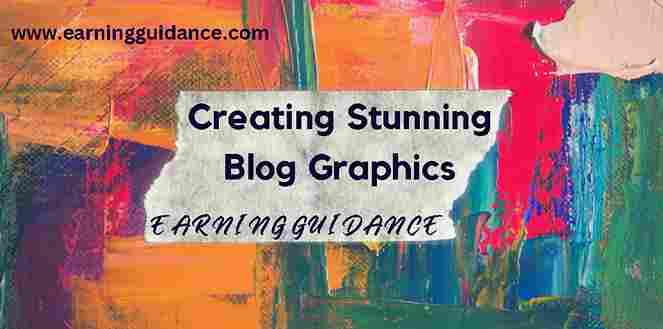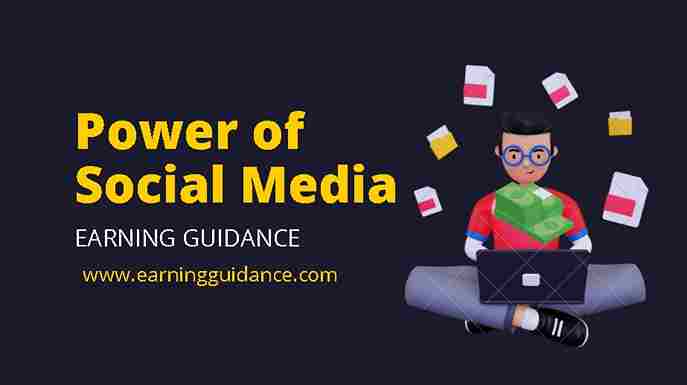Table Of Contents
- 1 Introduction
- 2 Understanding Personal Branding
- 3 Defining Your Brand Identity
- 4 Creating Compelling Blog Content
- 5 Leveraging Social Media for Personal Branding
- 6 Networking and Collaborations
- 7 Consistency and Authenticity
- 8 Engaging with Your Audience
- 9 Measuring and Evolving Your Brand
- 10 FAQs
- 10.1 A. How long does it take to build a strong personal brand through blogging?
- 10.2 B. Can I build a personal brand in a competitive niche?
- 10.3 C. Do I need to be an expert in my field to build a personal brand through blogging?
- 10.4 D. How can I monetize my personal brand through blogging?
- 10.5 E. What are some common mistakes to avoid when building a personal brand?
- 11 Conclusion
Introduction
In today’s digital age, personal bran ding has become increasingly important. Whether you are a freelancer, entrepreneur, or professional, establishing a strong personal brand can open doors to various opportunities. This article aims to provide you with a comprehensive guide on building a strong personal brand through blogging.
Monetizing Your Blog: Proven Methods for Generating Income
Understanding Personal Branding
A. The Significance of Personal Branding
Personal branding involves strategically showcasing your unique qualities, expertise, and values to differentiate yourself from others in your industry. It helps you shape public perception, build credibility, and establish a memorable presence.
B. Key Elements of a Strong Personal Brand
- Authenticity: Being true to yourself and your values.
- Consistency: Maintaining a unified and coherent brand image across all platforms.
- Value Proposition: Identifying and communicating what sets you apart from others.
- Target Audience: Understanding the demographics, interests, and needs of your audience.
- Storytelling: Crafting a compelling narrative that resonates with your audience.
C. Benefits of Building a Personal Brand through Blogging
- Credibility: Sharing your expertise and insights positions you as an authority in your field.
- Visibility: Blogging increases your online presence and reach.
- Networking: Building relationships with industry peers, influencers, and potential collaborators.
- Opportunities: Attracting partnerships, speaking engagements, and business opportunities.
The Power of Visual Content: Creating Stunning Blog Graphics
Defining Your Brand Identity
A. Identifying Your Unique Value Proposition and Target Audience
To build a strong personal brand, you need to identify what makes you unique and define your unique value proposition (UVP). Ask yourself:
- What skills, experiences, or perspectives set you apart from others?
- What problems can you solve for your audience?
Additionally, it’s crucial to identify and understand your target audience. Consider their demographics, interests, pain points, and aspirations. This knowledge will help you tailor your content and messaging to resonate with them.
B. Crafting Your Brand Story and Mission Statement
A compelling brand story helps connect with your audience on an emotional level. Your story should highlight your journey, values, and the reasons behind your passion for your niche. Craft a mission statement that encapsulates your brand’s purpose and the value it provides to your audience.
C. Developing a Consistent Brand Voice and Visual Identity
Consistency in your brand voice and visual identity is key to building a recognizable personal brand. Consider the following:
- Brand voice: Determine the tone, language, and personality that align with your brand and resonate with your audience.
- Visual identity: Create a consistent visual presence through a logo, color palette, typography, and imagery that reflects your brand personality.
Creating Compelling Blog Content
A. Importance of High-Quality and Valuable Content for Personal Branding
Creating valuable and engaging content is fundamental to building a strong personal brand. It establishes your expertise, provides value to your audience, and encourages them to trust and follow you. Consider the following tips:
- Research and understand your audience’s needs and interests.
- Provide solutions, insights, and actionable tips through your content.
- Showcase your unique perspective and expertise.
B. Identifying Your Blog’s Niche and Content Strategy
To stand out in a crowded blogosphere, identifying a specific niche for your blog is essential. Focus on a particular topic or industry that aligns with your expertise and target audience. Develop a content strategy that incorporates a mix of informative, educational, inspirational, and entertaining content.
Here is an External Source To Read more about Personal Branding Through Blogging:
Forbes – Personal Branding: How To Build and Manage Your Personal Brand
- Craft attention-grabbing headlines.
- Use subheadings and bullet points to enhance readability.
- Incorporate visuals, such as images, infographics, and videos.
- Include a call-to-action to encourage reader engagement and social sharing.
Leveraging Social Media for Personal Branding
A. Choosing the Right Social Media Platforms for Your Brand
Different social media platforms cater to various demographics and purposes. Choose platforms that align with your target audience and content type. Consider popular platforms such as Twitter, LinkedIn, Instagram, and Facebook.
B. Building a Strong Online Presence and Engaging with Your Audience
- Optimize your social media profiles to reflect your personal brand.
- Share your blog posts, insights, and valuable content.
- Engage with your audience through comments, messages, and discussions.
- Participate in relevant industry conversations and join communities.
10 SEO Strategies for Boosting Your Blog’s Visibility
C. Strategies for Using Social Media to Amplify Your Blog Content
- Share snippets or teasers of your blog posts to drive traffic.
- Use relevant hashtags to increase visibility.
- Collaborate with influencers or industry experts for cross-promotion.
- Encourage social sharing and user-generated content.
Networking and Collaborations
Networking and collaborations play a vital role in building a strong personal brand through blogging. By connecting with influencers and industry peers, you can expand your reach, gain new insights, and open doors to exciting opportunities.
A. Building Relationships with Influencers and Industry Peers
- Research and identify key influencers and thought leaders in your niche.
- Engage with their content by commenting, sharing, and providing valuable insights.
- Attend industry conferences, meetups, and networking events to connect with like-minded professionals.
- Reach out to influencers and peers through personalized emails or social media messages to initiate conversations.
B. Collaborating on Guest Posts, Interviews, and Joint Ventures
- Guest posting: Contribute high-quality content to authoritative blogs in your niche. This helps you reach a wider audience and establish your expertise.
- Interviews: Offer to be interviewed by other bloggers, podcasters, or influencers. This allows you to share your knowledge and insights with their audience.
- Joint ventures: Collaborate with others on projects, such as webinars, online courses, or ebooks. This expands your reach and provides valuable resources for your audience.
C. Leveraging Networking Opportunities to Expand Your Brand Reach
- Participate in online communities and forums related to your niche.
- Engage in discussions, answer questions, and provide valuable insights.
- Seek opportunities to be a guest speaker at webinars, conferences, or podcasts.
- Offer to contribute to industry publications or speak at local events.
Mastering the Art of Writing Engaging Blog Posts
Consistency and Authenticity
Consistency and authenticity are crucial for building a strong personal brand through blogging. They help create trust, establish your unique identity, and resonate with your audience.
A. Importance of Consistency in Branding and Content Creation
- Develop a consistent posting schedule for your blog and social media channels.
- Maintain a consistent brand voice and style across all platforms.
- Use consistent visuals, colors, and fonts to reinforce brand recognition.
- Regularly engage with your audience and respond to comments and messages.
B. Being Authentic and Genuine in Your Online Presence
- Share personal stories, experiences, and insights that align with your brand values.
- Be transparent about your successes, failures, and lessons learned.
- Show vulnerability and honesty when appropriate.
- Connect with your audience on an emotional level by sharing your genuine self.
C. Strategies for Maintaining Consistency and Authenticity in Your Blog
- Create a content calendar to plan and organize your blog posts.
- Develop a brand style guide to maintain consistency in visuals and messaging.
- Conduct regular self-audits to ensure your content aligns with your brand values.
- Seek feedback from your audience and adapt accordingly.
Engaging with Your Audience
Engagement is key to building a loyal audience and strengthening your personal brand. By actively interacting with your readers, you can foster a sense of community, gain valuable insights, and create a positive brand experience.
A. Responding to Comments and Engaging in Discussions
- Regularly monitor and respond to comments on your blog posts.
- Encourage meaningful discussions by asking questions and soliciting opinions.
- Address feedback and suggestions with gratitude and professionalism.
- Foster a respectful and inclusive environment for dialogue.
B. Encouraging User-Generated Content and Feedback
- Encourage your audience to share their experiences, opinions, and stories related to your blog topics.
- Feature user-generated content on your blog or social media channels.
- Implement feedback mechanisms, such as surveys or polls, to gather insights and improve your content.
C. Creating a Community Around Your Blog and Brand
- Establish a dedicated space for your audience to connect, such as a forum or Facebook group.
- Organize events, challenges, or contests to encourage participation and interaction.
- Foster a sense of belonging and camaraderie among your readers.
- Recognize and appreciate your community members to encourage ongoing engagement.
Measuring and Evolving Your Brand
Measuring the effectiveness of your personal brand and continuously evolving it are essential for long-term success. By tracking key metrics and making data-driven decisions, you can refine your strategies, improve your brand positioning, and adapt to changing trends.
How to Choose the Perfect Blogging Platform for Your Needs
A. Tracking and Analyzing Key Metrics for Brand Growth
- Monitor website traffic using tools like Google Analytics to assess the reach and engagement of your blog.
- Track social media metrics such as followers, likes, shares, and comments to gauge audience interaction.
- Measure email newsletter subscriptions and open rates to evaluate the effectiveness of your content and branding efforts.
- Analyze conversion rates and sales data to assess the impact of your personal brand on business goals.
B. Making Data-Driven Decisions to Improve Your Brand Strategy
- Use the insights gained from tracking metrics to identify areas for improvement and optimization.
- Identify patterns and trends in audience behavior to tailor your content and messaging accordingly.
- Experiment with different strategies and measure their impact to refine your brand positioning.
- Stay informed about industry trends and consumer preferences to stay ahead of the curve.
C. Adapting and Evolving Your Personal Brand Over Time
- Personal branding is an ongoing process, so be open to change and evolution.
- Regularly assess the relevance and effectiveness of your brand identity and adjust as needed.
- Seek feedback from your audience and adapt your brand strategy based on their preferences and needs.
- Embrace new technologies, platforms, and communication channels to stay current and reach a wider audience.
FAQs
A. How long does it take to build a strong personal brand through blogging?
- Building a strong personal brand takes time and consistency.
- It varies based on factors such as niche competition, target audience, and your dedication.
- Typically, it can take several months to years to establish a solid personal brand.
B. Can I build a personal brand in a competitive niche?
- Yes, even in competitive niches, you can build a strong personal brand.
- Differentiate yourself by focusing on your unique perspective, expertise, or storytelling.
- Find a specific angle or sub-niche within the broader market to carve your niche.
C. Do I need to be an expert in my field to build a personal brand through blogging?
- While expertise helps, you don’t need to be an absolute expert.
- Share your knowledge, experiences, and growth journey to connect with your audience.
- Be transparent about your expertise level and focus on continuous learning.
D. How can I monetize my personal brand through blogging?
- Monetization options include affiliate marketing, sponsored content, digital product sales, and coaching services.
- Focus on providing value, building trust, and establishing your authority in your niche.
- Explore different revenue streams that align with your brand and audience.
E. What are some common mistakes to avoid when building a personal brand?
- Inconsistency in branding and content creation.
- Lack of authenticity and trying to imitate others.
- Ignoring audience engagement and feedback.
- Neglecting the importance of networking and collaborations.
Conclusion
Building a strong personal brand through blogging is a transformative journey that requires dedication, consistency, and authenticity. By understanding the elements of personal branding, crafting compelling content, leveraging social media, networking with influencers, and engaging with your audience, you can create a powerful and influential personal brand. Remember that building a personal brand is an ongoing process, and it requires adaptability, continuous learning, and a genuine connection with your audience. Embrace the opportunities that blogging offers to showcase your expertise, share your story, and make a lasting impact in your niche. Start building your personal brand today, and enjoy the rewards of increased visibility, credibility, and professional opportunities.













2 thoughts on “Building a Strong Personal Brand Through Blogging”